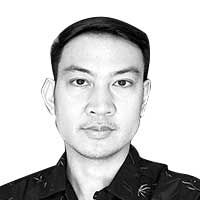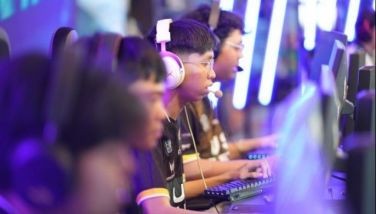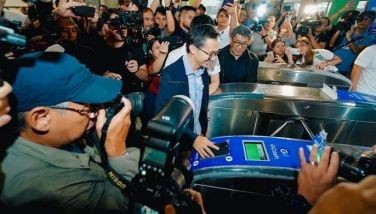Mural as visual history

By its sheer size and nature, a mural offers immense possibilities not only in expression, theme and scope but in its ability to immediately connect with the audience, establishing a dialogue and the opportunity for response. The great Mexican muralists Diego Rivera, David Alfaro Siqueiros and Jose Orozco, for instance, elevated in their murals the working class in their political struggles, giving them the imagery with which to anchor a vision of the future.
In the Philippines, an ambitious project called, “SiningSaysay: Philippine History in Art,” deploys the art of the mural, all 30 of them, to present a timeline of the country’s pivotal points through a visual narrative — from pre-history to contemporary times. Organized by the University of the Philippines (UP), the University of the Philippines Alumni Association (UPAA) and the Araneta Center, the permanent exhibition will open on Feb. 18 at Gateway Gallery, fifth floor of Gateway Mall in Cubao, Quezon City. After two years, it will move to its permanent home, the UP Main Library.
“These works tell the story of us, the Filipino nation narrated visually,” says UP president Alfredo Pascual. “SiningSaysay is an innovative way of teaching history, promoting art appreciation, understanding Filipino identity, and imbibing cultural pride; all constituting valuable aspects of teaching and public service, which UP is mandated to do.”
Led by National Artists for the Visual Arts Ben Cabrera, the participating artists are Adonai Artificio, Armand Bacaltos, Adi Baen Santos, Grandier Bella, Benjie Cabangis, Angel Cacnio, Romeo Carlos, Cris Cruz, Denes Dasco, Gig De Pio, Simkin De Pio, Vincent De Pio, Neil Doloricon, Norman Dreo, Amado Hidalgo, Ben Infante, Gigi Alfonso-Javier, Aileen Lanuza, Romeo Mananquil, Norlie Meimban, Julius Samson, Jonahmar Salvosa, Randy Solon, Michael Velasco, Jun Yee and Janice Young.
Tasked to render a particular historical juncture on a 6 feet by 12 feet canvas in oil and acrylic, each artist was given a free rein to depict it using his own personal iconography and style — from the rich coloration of the late Abdul Asia Mari Imao to the spare, evocative portraiture of Young. For purposes of historical accuracy, the artists consulted with respected historians Dr. Serafin Quiazon and Prof. Maria Luisa Camagay.
One of the artists, Baen, had “a direct experience of the period” he was asked to interpret: martial law. During the ’70s, the Baen-Santos formed, along with colleagues, Kaisahan, an artist-led, progressive initiative which directly confronted socio-political issues and concerns of national identity. In their work, they regularly depicted “the plight of the Filipino people.” In his work for SiningSaysay, the headline, “FM Declares Martial Law,” is framed with various images of political unrest, such as mass movements, strikes, torture, summary execution and police brutality.
The Filipino nominee of the Joseph Balestier Award for the Freedom of Art presented by Art Stage Singapore and the Embassy of the United States of America in Singapore, Baen clarifies that these images are not necessarily journalistic. “Dinagdagan ko ng mga images na karaniwan ko nang ginagamit sa mga paintings ko,” he says. “If you’re doing a historical painting, it’s a struggle between fact and form. If you get tied down by facts, masisira eh. Form has to prevail in certain areas. You can exploit the form as long as you don’t distort the facts.”
This sentiment is shared by Jun Yee who incised the symbols of the Angono petroglyphs directly on solidified Versatex plaster applied on marine plywood to depict our forebears’ pre-historical roots. He organized the petroglyphs to effect “a new composition” while staying true to their actual forms. As an addition, Yee painted a silhouette on the surface, at once evoking the artist and the one who painted those figures thousands of years ago.
While “SiningSaysay” is, at its core, instructive, it is also representational of how the artists responded when presented with certain thematic constraints. Tapping rich inner reserves, they approached the task with confidence and great skill, tempering the imagination with facts, fusing their own biography with the nation’s memory. They prove that while history subsists on a bedrock of facts, it is also very much a product of imagination, of how people choose to see themselves against the stories they wish to tell.




















